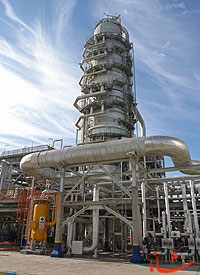Oil production from the well, which started at 500 barrels per day practically, started in 1911, to mark the birth of the Iranian oil industry.
After oil discovery in Masjed Soleiman, exploration in other areas continued and led to discovery of Haftgel oil field in 1927, Aghajari oil field in 1936,
Those oil fields are currently operating with all installations, plants and pipelines needed for production, processing, and transfer of crude oil to domestic refineries as well as crude oil export terminals.
Before 1970s, activities related to exploration and production of crude oil, were carried out by Iranian Oil Exploration and Extraction Company. The company, which was in charge of planning, funding, exploiting, and developing oil fields as well as maintenance of technical installations, was based in Masjed Soleiman.
At the beginning of 1970s, due to acceleration of oil and gas production operations as well as exploration and drilling activities, Iran Oil Services Company (Private Joint Stock) was established as the main contractor of the National Iranian Oil Company. It took charge of all exploration activities as well as planning and execution of drilling operations; establishment and commissioning of installations and pipelines; studying oil and gas fields and preparing draft development plans for boosting production from those fields as well as financial and budgetary appraisal. Non-Industrial Operations Company was also established to take charge of all non-industrial activities throughout the whole production process.
After victory of the Islamic Revolution in 1979 and eviction of foreign contractors, Iranian staff and management took charge of exploration, drilling, and exploitation activities. Also, major maintenance centers, which were based in
Shortly after victory of the Islamic Revolution and breakout of the Imposed War, the Iranian oil industry was put to a big test. Since major oil fields and installations as well as export outlets were located a short distance from the battlefield, they became easy targets for land and air attacks by enemy forces. However, during eight years of ferocious war, they continued production and exports of crude oil under savage attacks of the Iraqi forces.
A cursory glance at the increasing number of oil production, gas and liquid gas, and desalination plants, especially gas collection, compression and injection stations as well as comparison of active wells to total wells both before and after victory of the Islamic Revolution will show that Iranian oil specialists have not only been able to implement technical and specialized plans, but have been very successful with regard to development of those plans in proportion to rising demand in the country.
Now, 99 years after the oil gushed from the first well in


Your Comment